Out of the blue, the Devil’s Wall in the Harz Mountains unveils a series of peculiar rock formations. Comprising resilient sandstones at the heart of Germany’s Harz Mountains, this rocky barrier emerges unexpectedly in the midst of lush plains, meadows, and fields. Extending from Blankenburg in the Harz to Ballenstedt, passing through Timmenrode, Weddersleben, and Rieder, this extensive stretch encompasses various sections like Hamburger Wappen or Königsstein.
The rock wall, standing several meters tall, is an unusual destination with no significant challenges. Connecting the nearby villages, hiking trails wind along the rock formations, making it convenient for day trips from these charming settlements. During our Harz Mountains adventure, we explored three sections, each boasting its own distinctive features.
Devil’s Wall in the Harz Mountains
The three segments of the Devil’s Wall in the Harz Mountains include:
- Königstein at Weddersleben
- Hamburger Wappen (“Hamburger Coat of Arms”) at Timmenrode
- Gegensteine (“Counter Stones”) near Ballenstedt
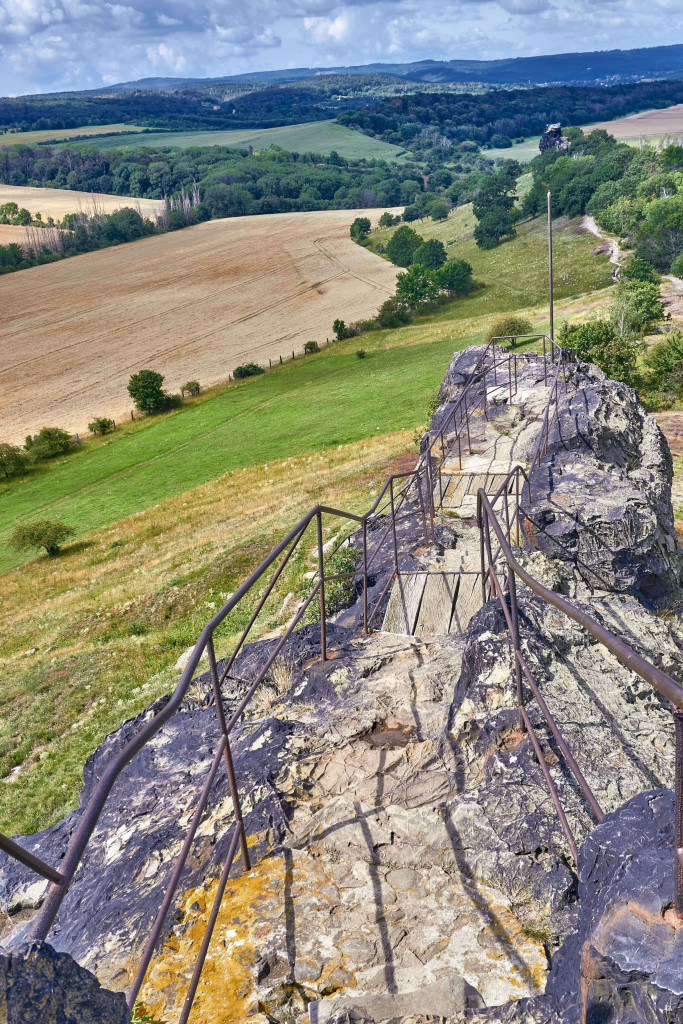
Königstein at Weddersleben
The Devil’s Wall (Teufelsmauer in German) near Weddersleben encompasses various sections, including Königstein, Mittelsstein, and Papenstein near Warnstedt. Königstein, highlighted on the Google Map as Teufelsmauer, stands out with its Eagle’s Rock (Adlerfelsen), reaching a height of 185 metres above sea level, making it the highest point of the Königstein. A small platform is available for visitors to rest and enjoy the scenic view.
The public parking is situated at the Teufelsmauer parking area in Thale. Adjacent to the parking lot, a straightforward wooden gate marked “TEUFELS MAUER STIEG” signals the trail’s start. Following a comfortable sandy path, ascending a few wooden stairs, passing a small public garden (Teufelsmauergarten), we reached Königstein.
While many visitors only walk to the Königstein section, it is feasible to extend the hike to other segments and complete a loop walk via the south side.
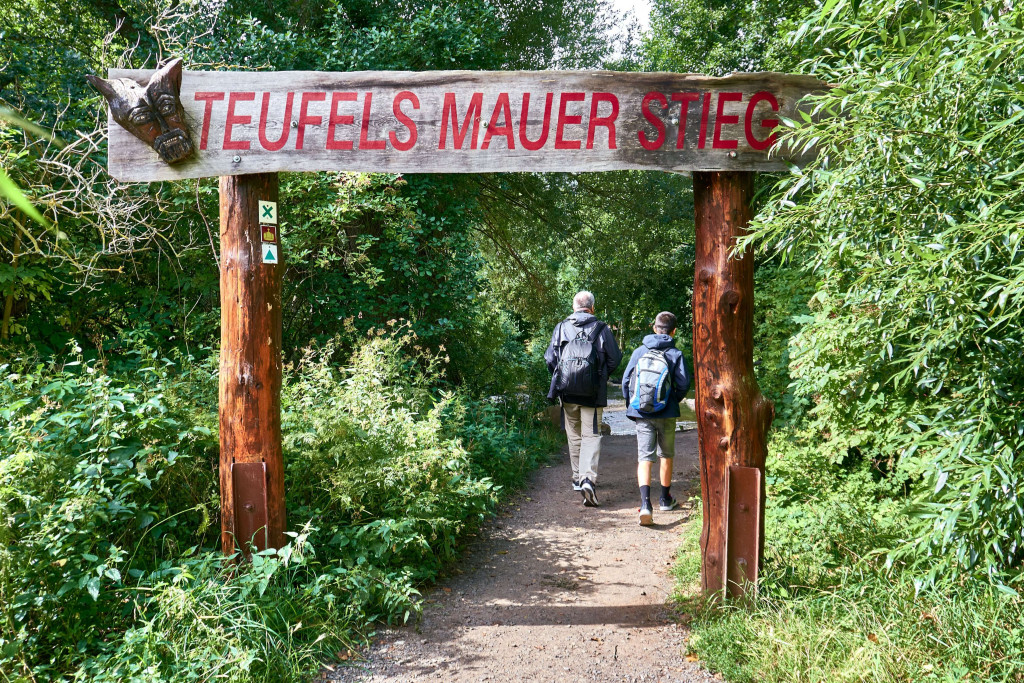
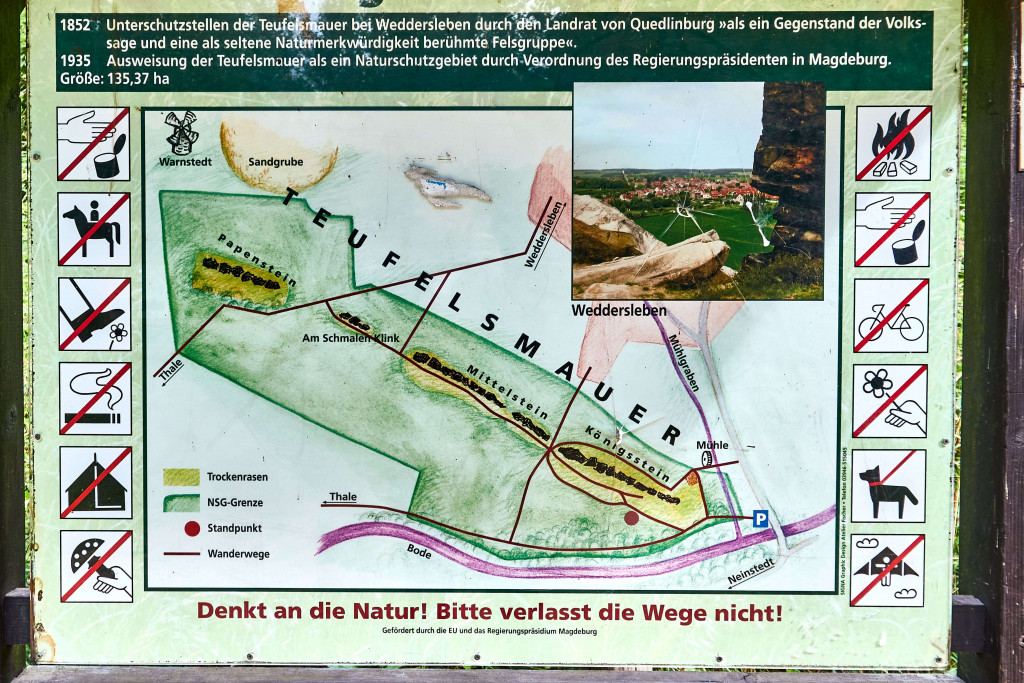

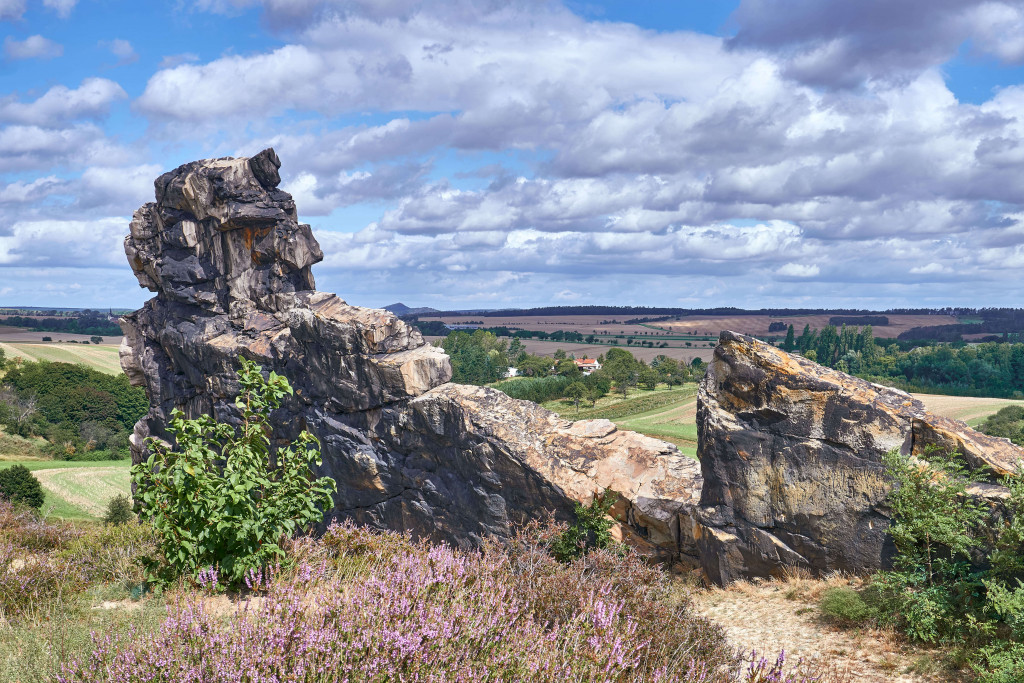
Hamburger Wappen (“Hamburger Coat of Arms”) at Timmenrode
The three soaring rock pinnacles, resemble of Hamburg’s coat of arms with its distinctive three towers, reach heights of up to 40 metres. Positioned on the north side of the rocks, a 15-step crenellated staircase (Zinnentreppe) carved into the rock allows visitors to ascend to the top.
On the south side, there is a sandstone cave, and behind it lies the Knight’s Staircase (Rittertreppe). Although we approached the edge, we decided not to traverse the staircase due to its challenging appearance.
We reached Hamburger Wappen from Timmenrode. There is a public parking place in the village, the Parkplatz Teufelsmauer Timmenrode. Hamburger Wappen is about 10 minutes of walking via Linderstraße.
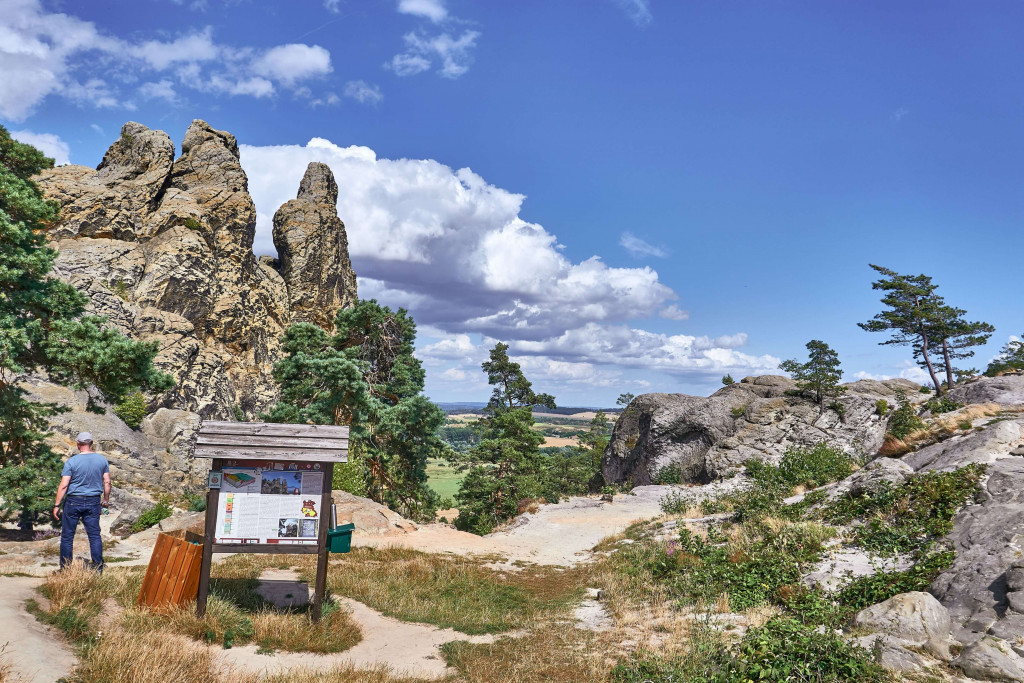
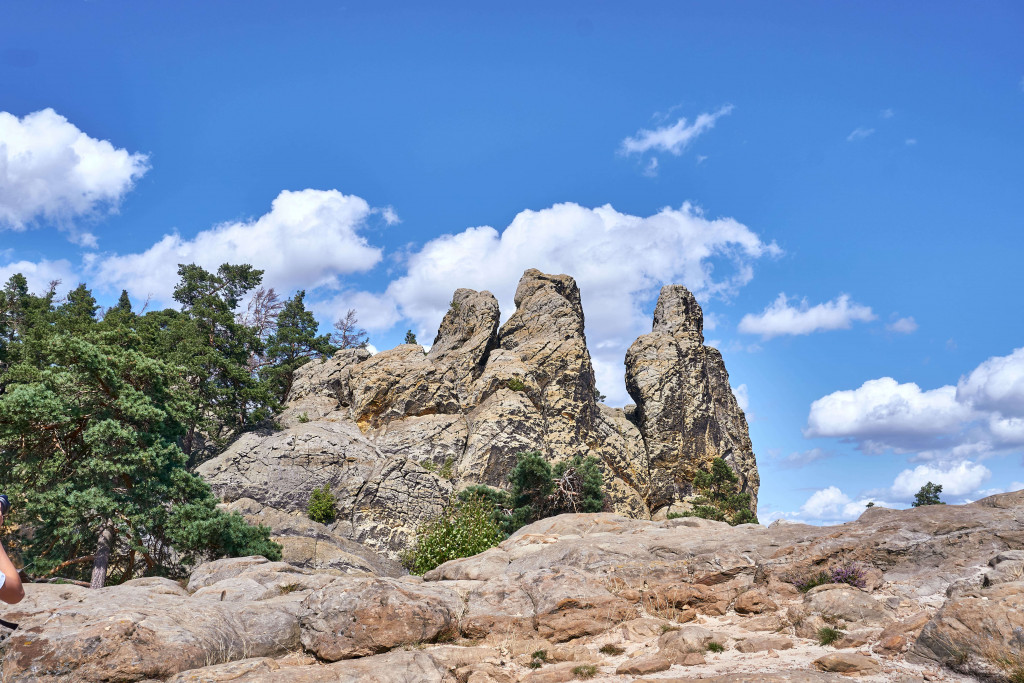
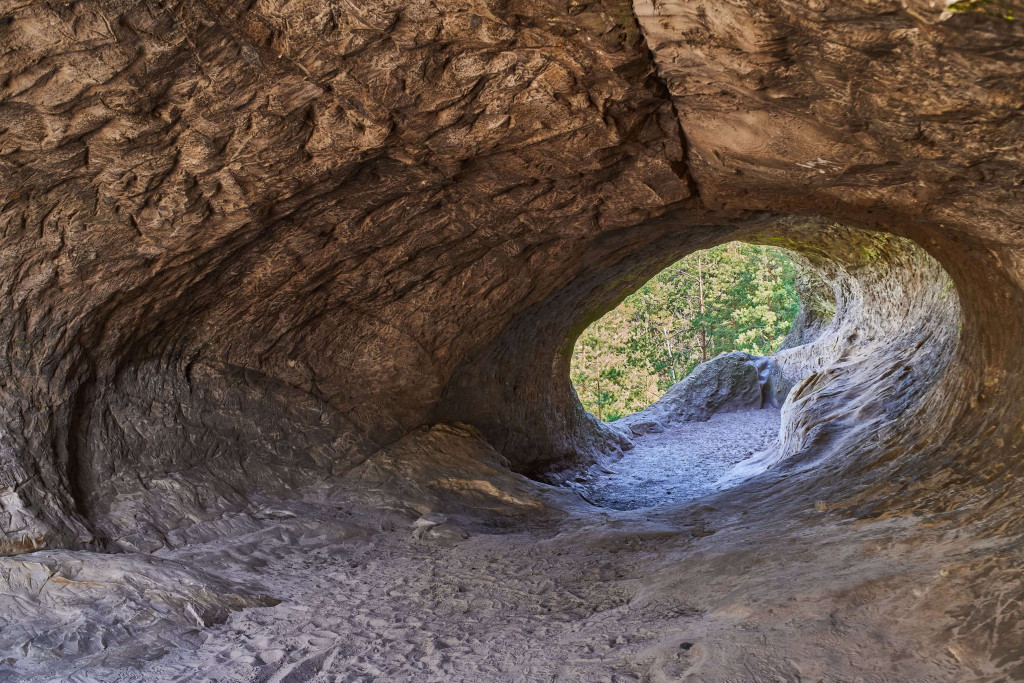
Gegensteine (“Counter Stones”) near Ballenstedt
The striking counter stones form the most easterly extension of the Teufelsmauer, situated to the north of Ballenstedt. Accessible via the B185 and L242, these impressive sandstone rocks captivate the observer with their mystical appearance, as though cast into the flat landscape by the “devil’s hand.”
The Gegensteine comprises two distinct sandstone formations, namely the Small and the Large Counter Stones (Kleiner Gegenstein and Großer Gegenstein). Visitors can ascend the Large Counter Stone using a staircase carved into the rock. At the summit, a cross stands tall, commemorating Duke Alexander Carl von Anhalt-Bernburg.
As we went along the ridge, we were captivated by the distinctiveness of nature and the lush vegetation. At the eastern base of the counter stones, there sprawls an expansive cave system. The origins of these caves, including who built them and for what purpose, remain shrouded in mystery.
The public parking area is situated close to the small counter stone (Kleiner Gegenstein). To reach the large counter stone, we crossed a small hill and proceeded through a vast field full of wildflowers. The brief walk was equally delightful.
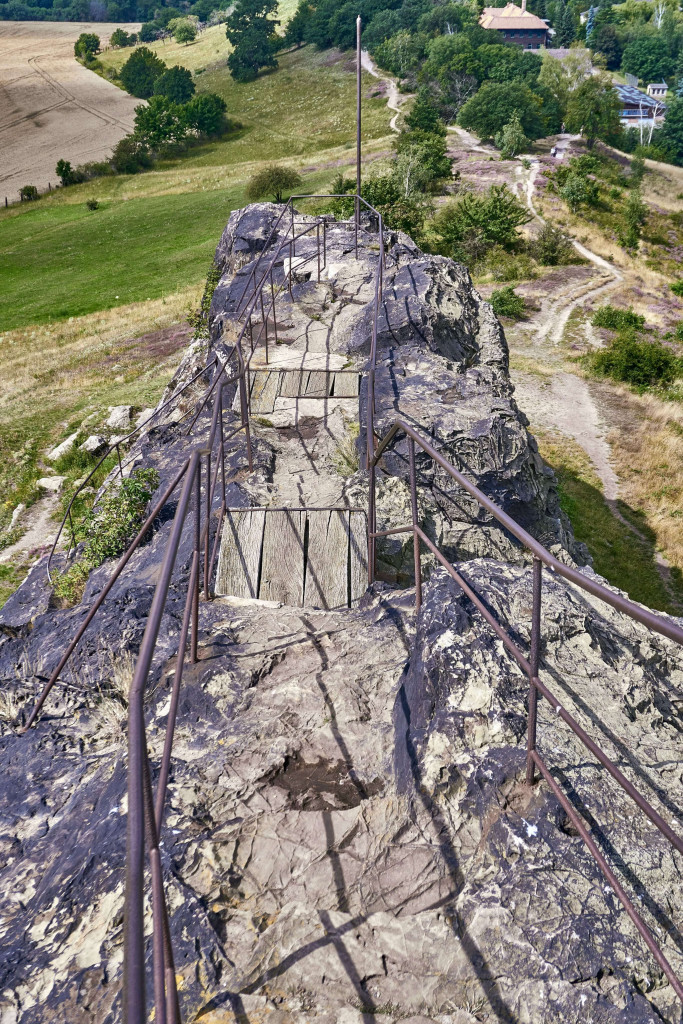
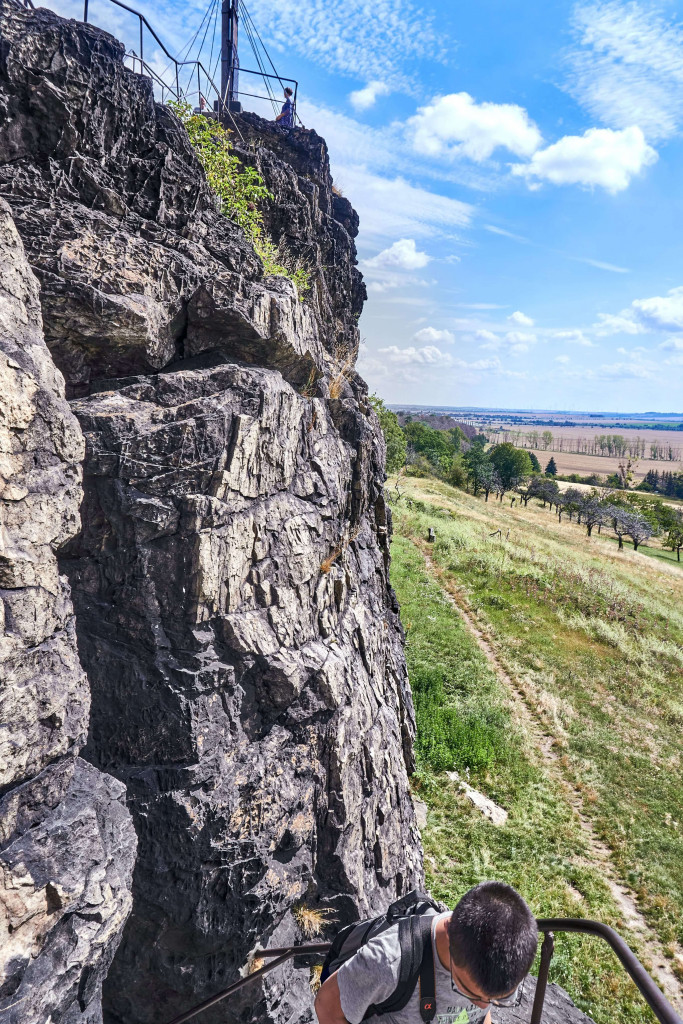
Travel experience
Which one is the best
Among the three sections of the Devil’s Wall in the Harz Mountains, my personal favorite is the Gegensteine (“Counter Stones”) near Ballenstedt. Climbing up the rock is not too challenging, and the view from the top is truly superb!
The Hamburger Wappen (“Hamburger Coat of Arms”) at Timmenrode offers a more challenging climb, making it ideal for adventure enthusiasts. However, it’s also possible to explore the rocks and caves without engaging in climbing activities.
Königstein at Weddersleben is less complicated and is well-suited for family travelers.
Where to stay
As this is a popular tourist destination and holiday area, the surrounding villages provide numerous affordable accommodation options:
- Ferienwohnungen Ziesing (Weddersleben, Thale)
- Bagger’s Ferienhaus (Timmenrode)
- Appartements Residenz Jacobs (Ballenstedt)



